- Home
- Stephen Baxter
Exultant Page 13
Exultant Read online
Page 13
Suddenly the ship was alive; there was no other word for it. And despite the worst predictions of the doomsayers, even though he knew he was triangulated by a dozen starbreaker beams and other weapons, the ship waited to do his bidding. He laughed out loud.
Darc’s face was hovering before him, a shining coin, purple with rage. “I’ll feed you to the recyclers if you try another stunt like that, you little runt!”
No, you won’t, Pirius thought. You won’t dare. In the Conurbations of Earth, I’m a hero. It was an unexpected, delicious, utterly non-Doctrinal thought. He had the power—and Darc knew it.
“Awaiting permission to start the trial, sir,” Pirius said, carefully keeping his voice level.
Darc’s mouth worked, as if he were chewing back his anger. Then he said, “Do it.”
Pirius selected hovering icons and gathered them together with gentle wafts of his hands. Then he pointed.
The sparse stars blurred, turned blue. Saturn crumpled like a wad of golden tissue, vanished. Then the stars settled back, like a curtain falling, and it was over, almost before he knew it had begun.
There should have been no kick in the back, no sense of acceleration; if the inertial shield failed by the slightest fraction he would have been reduced to a pulp. And yet he felt something, as if his own body knew it had taken a great leap.
“… hear me? Respond, Ensign. Darc to Pirius. Respond—”
“Yes, sir, I’m here.”
There was a perceptible delay before Darc replied. “Ensign, you traveled light-seconds at around three-quarters lightspeed.”
“Just as per the flight plan.”
“You even stopped where you were supposed to.”
Pirius glanced back over his shoulder. Saturn, the only object in his universe large enough to show a disc, had been reduced to a tiny yellowish spot. He should have felt even more isolated, he thought; exposed. But all he felt was power. With this ship he could go anywhere, do anything.
And the test had barely begun.
“Sir, do you want me to bring her back?”
“You sit tight,” Darc snapped. “That fly is going to get a thorough checkout before it moves another centimeter—as are you. We’re coming as fast as we can.” And so they were, Pirius saw. Staring toward Saturn, he made out a small flotilla of ships, gradually drifting across the background stars.
He pressed his hands to his thighs, resisting the temptation to take off once more.
Nilis loomed huge over the nightfighter. With its wings furled, the ship would have rested in the palm of the hand of this kilometers-high Virtual, Pirius thought.
It ought to have been an absurd sight, even a faintly revolting one; Nilis’s head was the size of a Spline starship, every blocked pore in his aged skin a pit like a weapons emplacement. But Pirius was back in orbit around Saturn now, and the planet’s subdued, golden light oddly filled up the Virtual image. And wonder was bright in Nilis’s tremendous eyes.
“Defects in spacetime,” Nilis said. “That’s what the wings of a nightfighter are. Flaws in the structure of spacetime itself. And look here.”
He waved his immense hands and produced another gigantic Virtual. This one showed the Xeelee nightfighter in flight, the beautiful, elusive, bafflingly complex motions of its wings of flawed spacetime. Nilis replaced the true image with a schematic. The ship was overlaid by a framework, a kind of open tetrahedron, with bright red blobs at its four corners. The tetrahedron went through a complex cycle of deformations. It closed like an umbrella, its legs shortening as they moved; then they would lengthen before the “umbrella” opened again and the frame returned to its starting configuration.
“This is a schematic of the wings’ motion,” Nilis said. “See the way the wings change their shape. You have to think of spacetime as the natural medium of the craft. It is like—like a bacterium embedded in water. To a small enough creature, water is as viscous as treacle, and in such sticky stuff swimming is difficult, because if your recovery stroke is the same as your impulsive stroke you pull yourself back to where you started. So what bacteria do is adopt different geometrical shapes, during the first and second parts of the stroke, to pull themselves forward. It’s called a geometric phase, a closed sequence of different shapes.
“Pirius, the nightfighter is embedded in spacetime as surely as any bacterium in water. By pulsing through their sequence of shapes, the wings of the nightfighter are clearly using a geometric phase to control and direct the ship’s motion. It’s a shape-shifting drive—nothing like a rocket, no need for anything like reaction mass to be thrown out the back of your ship—really quite remarkable. And quite unlike the principles on which human sublight drives are based.”
Pirius understood, if vaguely. Human-designed drives pushed, not against spacetime itself, but against the vacuum, the seething quantum foam of virtual particles that pervaded space. At the heart of such a drive was an extended crystalline substrate, made to vibrate billions of times a second. As the substrate passed through the quantum foam, electric fields were induced in its surface by the foam’s fluctuating forces, fields dissipated by spraying out photons. If you arranged things right, so Pirius had been told in cartoon-level lectures, you could use those shed photons to push you forward.
“Our drives work all right,” Nilis said. “But they are slower than the Xeelee drive. And they break down constantly. Those crystals are expensive, and they shatter easily.”
Pirius knew that. You had to carry a rack of spares for a journey of more than a few light-hours. “And besides,” he said slowly, “the Xeelee method sounds more …” He couldn’t think of the word.
Nilis smiled hugely. “Elegant?”
“I guess so.”
“Thanks to your brave work today, we understand the source of that elegance a great deal better. But still there are questions. Swimming in spacetime is an odd way to do things. This is a method that would work best in regions of highly curved spacetime, where you can get more traction—say, around a black hole.”
“We know the Xeelee infest Chandra.”
“Yes, and that offers us all sorts of clues about them. But they also have to operate in environments like this, far from any dense concentrations of matter, where spacetime is all but flat. In fact, if the spacetime were perfectly flat, the drive couldn’t work.
“And why use spacetime defects as the basis of your drive in the first place? There was a time, in the moments after the Big Bang singularity, when such things were common, for the orderly structure of the swollen spacetime we inhabit was still forming. There were points, loops, sheets—”
“The point defects are monopoles.”
“Yes. That’s why monopoles are useful weapons—one defect can interfere with another. Spacetime was heavily curved, too. I suppose if you were designing a drive system, then you might naturally pick defects and spacetime-swimming as your way to work. It isn’t nearly so obvious now—and hasn’t been since microseconds after the singularity. So why use it? And then there is the question of the Xeelee themselves. Where are they?”
That leap confused Pirius. “Sir?”
“No matter how closely I inspect this craft I can only find machinery, layer upon layer of it. No sign of a crew!”
“I don’t know what that means.”
“Nor do I—not yet.” The immense ghostly Virtual leaned forward, and a glistening eye the size of a Conurbation loomed eagerly over Pirius. “Still, I do think we’re getting somewhere. The word ‘Chandra,’ you know, is very ancient—preOccupation. Some say the black hole is named after a scientist of antiquity. Others say that the word means luminous. Well, if luminous it is, I don’t think Minister Gramm is going to enjoy the sight of what Chandra is beginning to illuminate for us!”
Chapter 12
Alone, her skinsuit stained dark gray by moondust, Torec clambered through the remains of an exotic matter factory.
This place had been built twenty thousand years ago by the Qax, alien occupiers of Earth.
After the rebellion that had forced the Qax out of Sol system, all the equipment had been stripped out, and the roof smashed open to the black sky. You could still see small blast craters and bits of wreckage left over from that ancient turmoil. And the gaunt walls remained, broken sheets of lunar concrete that cast long, sharp shadows over the undulating dust of the Moon ground.
While Pirius had been flying a nightfighter among the moons of Saturn, she had been stuck here a month already. There were three weeks left before the deadline Gramm had set, and the final demonstration of Nilis’s prototype CTC processor, his time-travel computer, would be due. Torec longed for those weeks to be up.
Torec was always aware of Earth, high in the sky. The great arc of the Bridge was easily visible—stunning, unnatural, disturbingly defying logic. And she could see the layers of defenses that surrounded the home planet: the circling Snowflakes, the crawling specks of patrolling warships. Even seen from its Moon, Earth bristled with fortifications.
It was only in these ruins, half an hour’s hike from the development base, that she felt at ease. When she walked here, Earth’s bright blue was eclipsed by the broken masses of the walls, and she could imagine she was far away from here, not in Sol system at all. And the best thing was that the earthworm techs she had to work with never came here.
An alarm chimed softly in her helmet. The latest integration test was due to begin, a full-scale run of the CTC-processor prototype. It would go ahead whether she was there or not, of course. But she had her duty.
She turned, made for the open sunlight, and began to bound across the plain, legs working together in a comfortable low-gravity style.
She took her place on the low ridge that had been designated as an observation area. A countdown was proceeding, she saw, a silent flickering of numerals ticking away on monitoring displays. Techs stood patiently and bots hovered, waiting for the test to begin.
The prototype CTC processor was a maze of ducts, pipes, and tubes that connected anonymous silver-white boxes. It sprawled for more than half a kilometer over the dusty lunar plain. The ground was darkened by boot prints, but as the time of the test approached the area had been evacuated, and only monitoring bots hovered cautiously over the complex central tangle.
The prototype, gleaming silver and gold in the pure low sunlight of lunar morning, looked oddly beautiful, a scattered work of art. But Torec had come to hate this thing which governed her life.
Two Virtuals materialized, out of nothing. One was dressed in a skinsuit; the other, Nilis, was not. The Commissary, hovering a few centimeters above the lunar floor, wore nothing more than his customary scuffed robe, and his feet were bare. He had never been one for Virtual protocol, but this was actually illegal. Virtuals were supposed to “dress” suitably for the environment they showed up in; it cost nothing more than a little extra computing power, and to do otherwise risked fooling a real-life inhabitant of the target environment about conditions that could be lethal. But it was typical Nilis, Torec thought. As he watched the patient countdown, his gaze was intent, his hands clasping each other, his eyes hollow.
The other Virtual was of a woman, dressed appropriately in a skinsuit. She was tall, somehow elegant despite her functional clothing. Seeing Torec, she walked across to her, leaving no footprints in the lunar dust. “You’re the Navy child.”
Torec bristled. “I’m Ensign Torec.”
“My name is Pila. I work in the Ministry of Economic Warfare.” Her face was smooth, ageless; she gazed at Torec, apparently mocking. It was a look Torec had become very familiar with on Earth, and had come to despise.
“I met you once. You work for Minister Gramm.”
“I’m one of his advisors, yes.” Pila waved a hand at the prototype. “Very impressive. And it’s all based on time travel?”
“Closed-timelike-curves, yes.” Torec pointed to the ducts. “Pilot Officer Pirius—Pirius Blue—defeated the Xeelee because his fellow pilot used her FTL drive to bring tactical information back from the future. So we have miniature bots in those tubes. The bots are the components of the processor. They fly back and forth, and actually jump through short FTL loops.”
“Little starships in tubes! And these bots travel back in time and tell you the answer before you even pose the question?”
“Something like that.”
“How marvelous.”
The dummy problem they were hoping to run today concerned protein folding. Proteins were the structural elements of life, but remained beyond the capability of humans to design optimally. There were more proteins a hundred components long than there were electrons in the universe; to work out how many ways a long protein molecule could fold up was an ancient problem, previously insoluble even in principle. “But we hope to crack it,” Torec said. She pointed to a large blank Virtual screen. “The results will be displayed there.”
Pila eyed her analytically. “Are you enjoying your posting here, Ensign? On the Moon, this project?”
“I’m here to do my duty, ma’am.”
She nodded, her mouth pursed. “Of course. And you anticipate success?”
Torec had learned how to deal with smooth-faced bureaucrats and their slippery questions. Nilis had warned her severely that if she were pessimistic, or even overly optimistic, she could trigger the funding being pulled. “This is only the first step. A proof of principle. Eventually we will have to cram this down into a unit small enough to be carried on a greenship.”
“A clever answer,” the woman murmured. “And what is your key problem?”
Torec shrugged. “Control of those flying bots, obviously. We’ve a list of issues.”
Virtual Nilis, who had ignored them both completely, now clapped his hands in agitation. Torec saw that the silent count was nearing its close; Nilis, projected from distant Earth, could barely contain his anticipation. Even Pila turned to look.
The count reached zero. The Virtual screen stayed blank, empty of protein schematics.
In that first instant Torec knew the trial had failed. After all, the whole point of this FTL-computing exercise was to send the answer back in time to the beginning.
And an explosion flared at the center of the complex. Torec was briefly dazzled. Silent, brief, the detonation kicked up an unspectacular flurry of moondust that, with no air to suspend it, collapsed immediately back to the ground.
Torec blinked and looked around. On the lunar plain, the techs were already converging on the ruin of their prototype. Some of them, she could hear on the open loop, were actually laughing.
The woman Pila had already gone.
The Virtual of Nilis was glaring at her. She had never seen him look so angry. “In your quarters,” he snapped. “Now.” And he winked out of existence, leaving pixels sparkling briefly.
When she got back to her quarters she pulled off her skinsuit, dumped it in a hopper, and climbed into her shower.
Big droplets of water squeezed out of the spigot with infuriating low-g slowness. It was typical of the earthworms to install such a luxury in a place where water couldn’t even flow properly, where it would actually have been better to have been supplied with simple honest clean-cloths. But she slaked off her sweat, rinsed her hair, and washed moondust out from under her nails.
The project’s development was being carried out on the floor of an immense walled plain called Clavius. Though this had once been the site of a major industrial facility erected by the Qax, it was far to the lunar south, and so was still outside the scope of the current paraterraforming efforts, the vast domed colonies that were turning the Moon’s face green around the equatorial foot of the Bridge between Earth and its satellite.
For a month, Torec had been stranded in this airless, dusty place. Nilis had given her a small team of scientists and engineers, to progress his designs for a revolutionary new computer. It had done her no good to protest that she had been trained as a pilot; she was a fighter, not some kind of double-domed tech. Nilis said it was important that one of what he call
ed his “inner team” be attached to this essential development.
So she had been put in charge of what was laughingly called the Project Office. It was her job, in theory, to make sure the techs here did their work to spec, to quality, and on time.
At first she had actually welcomed the move to the Moon. Unlike the Earth, the Moon was a proper world, in her view, a world without a freakish layer of unmodified atmosphere or surging bodies of open water. This was a world where, quite properly, if you stepped out of a dome you had to wear a skinsuit, and where if you fell over you weren’t likely to break anything—if you wanted high gravity you set an inertia field; that was the way it was supposed to be. She had even liked the look of the scenery, when Nilis had shown her images of Clavius from orbit, a spectacular crater formation with mountainous walls surrounding a cluster of settlement lights.
But it hadn’t turned out that way. For a start, the Moon itself was not like the rocky worlds she had encountered in the Core, where, thanks to the stars’ relentless crowding, few stellar systems were stable, and worlds wandered where they would. The Moon had spent five billion years stuck at the bottom of a star’s gravity well as the companion of a massive planet, and debris, sucked in by those overlapping gravity fields, had battered its surface until nothing was left. As a result, every mountain was sandblasted to a dunelike smoothness, and every scrap of the ground was covered by a thick layer of dust that crushed under your feet where you walked, or kicked up behind you, and stuck to your skinsuit until it was almost impossible to get off, no matter how hard you scrubbed.
And then there were the people.
Incredibly, she was the only person here born beyond the orbit of the Moon. Not only that, aside from a couple of essential-systems and security types, she was the only Navy personnel here. The rest of them, Ministry folk, were bureaucrats—and they were double-domes. From the beginning, they had looked on her as a bizarre, exotic creature from some alien realm, as if she weren’t human at all.
The double-domes had soon discovered that she knew little about their technical specialisms. When she tried to put her foot down, they would bluster and baffle her with jargon. And they squabbled among themselves, the whole time. From the start, the development team was organized into groups corresponding to subcomponents of the CTC processor itself, or else stages of the project: scoping, design, component prototyping, subassembly, integration. No matter how Torec tried, those groups soon became clannish, to the point where many of them wouldn’t even communicate with each other—even though their work would have to fit together seamlessly if the overall goal was to be reached.

 The Martian in the Wood
The Martian in the Wood THE H-BOMB GIRL
THE H-BOMB GIRL World Engine
World Engine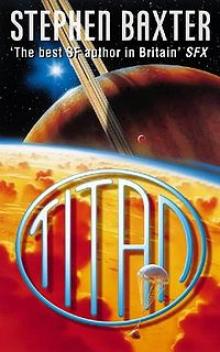 Titan n-2
Titan n-2 Newton's Aliens: Tales From the Anti-Ice Universe
Newton's Aliens: Tales From the Anti-Ice Universe Exultant
Exultant Manifold: Origin
Manifold: Origin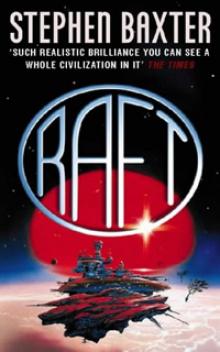 Raft xs-1
Raft xs-1 Bronze Summer n-2
Bronze Summer n-2 Transcendent
Transcendent Stone Spring
Stone Spring Coalescent
Coalescent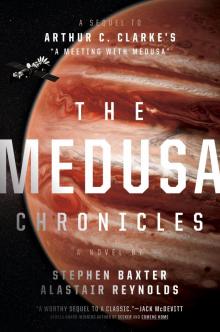 The Medusa Chronicles
The Medusa Chronicles Origin m-3
Origin m-3 Silverhair tm-1
Silverhair tm-1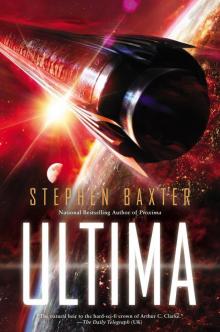 Ultima
Ultima Voyage n-1
Voyage n-1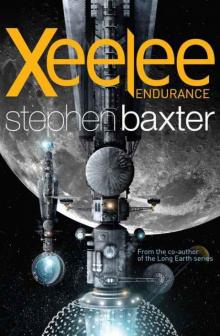 Xeelee: Endurance
Xeelee: Endurance Space m-2
Space m-2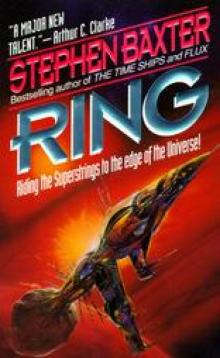 Ring xs-4
Ring xs-4 Raft
Raft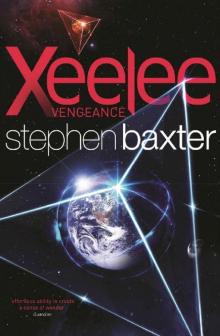 Xeelee: Vengeance
Xeelee: Vengeance Iron Winter n-3
Iron Winter n-3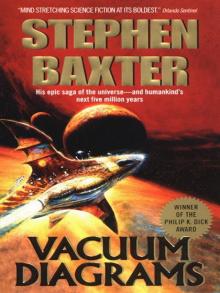 Vacuum Diagrams
Vacuum Diagrams Longtusk tm-2
Longtusk tm-2 Proxima
Proxima Evolution
Evolution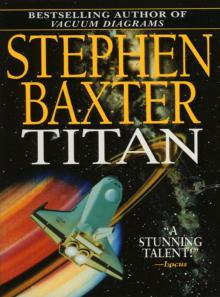 Titan
Titan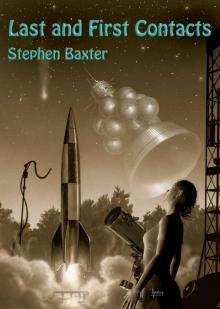 Last and First Contacts (Imaginings)
Last and First Contacts (Imaginings)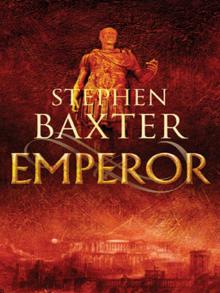 Emperor
Emperor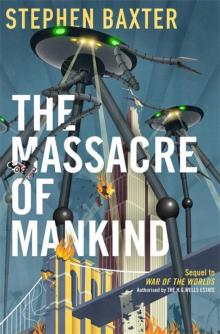 The Massacre of Mankind
The Massacre of Mankind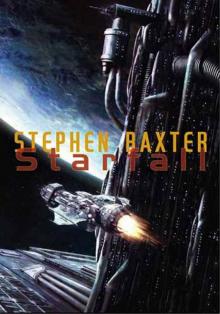 Starfall
Starfall Doctor Who - The Wheel of Ice
Doctor Who - The Wheel of Ice Longtusk
Longtusk Silverhair
Silverhair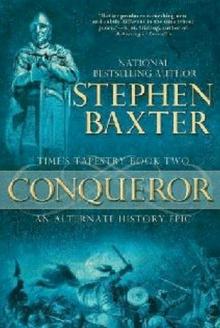 Conqueror tt-2
Conqueror tt-2 Flood
Flood Flood f-1
Flood f-1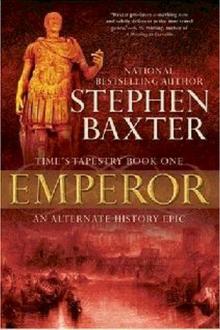 Emperor tt-1
Emperor tt-1 Moonseed
Moonseed Conqueror
Conqueror Timelike Infinity xs-2
Timelike Infinity xs-2 The Ghost Pit
The Ghost Pit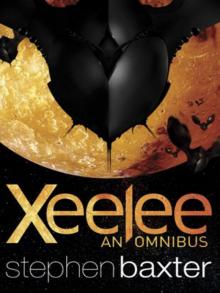 Xeelee: An Omnibus: Raft, Timelike Infinity, Flux, Ring
Xeelee: An Omnibus: Raft, Timelike Infinity, Flux, Ring Weaver tt-4
Weaver tt-4 Landfall: Tales From the Flood/Ark Universe
Landfall: Tales From the Flood/Ark Universe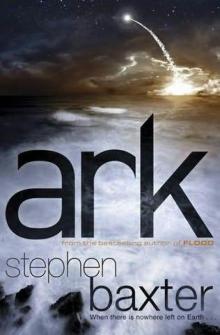 Ark
Ark Emperor: Time’s Tapestry Book One
Emperor: Time’s Tapestry Book One Space
Space Icebones
Icebones Manifold: Space
Manifold: Space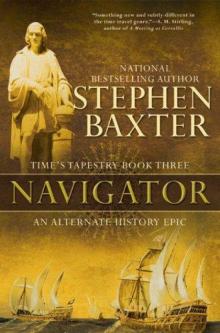 Navigator
Navigator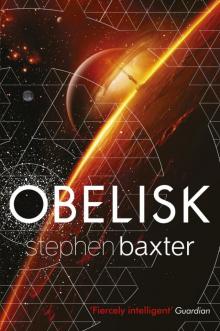 Obelisk
Obelisk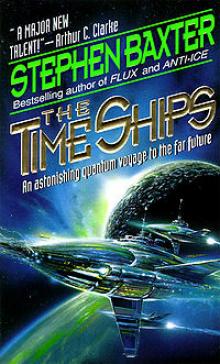 The Time Ships
The Time Ships Bronze Summer
Bronze Summer Resplendent
Resplendent Moonseed n-3
Moonseed n-3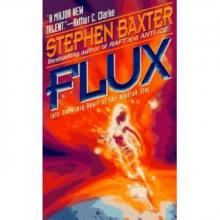 Flux xs-3
Flux xs-3 Transcendent dc-3
Transcendent dc-3 Icebones tm-3
Icebones tm-3 Phase Space
Phase Space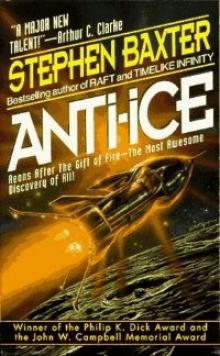 Anti-Ice
Anti-Ice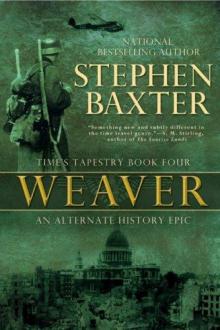 Weaver
Weaver Voyage
Voyage Time m-1
Time m-1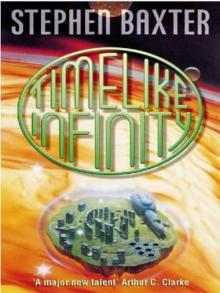 Timelike Infinity
Timelike Infinity Exultant dc-2
Exultant dc-2 Coalescent dc-1
Coalescent dc-1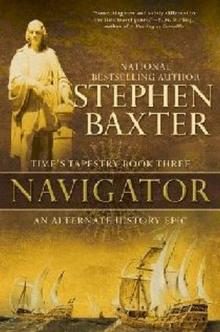 Navigator tt-3
Navigator tt-3